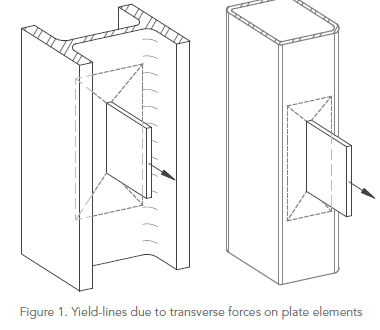X4vier
Civil/Environmental
- Feb 24, 2018
- 157
Hello,
I'm seeing the Eq. 9-31 from the 15th AISC Manual.


My question is how was this effect (out-of-plane forces) evaluated for the previous version of AISC codes?
Thanks.
I'm seeing the Eq. 9-31 from the 15th AISC Manual.


My question is how was this effect (out-of-plane forces) evaluated for the previous version of AISC codes?
Thanks.
